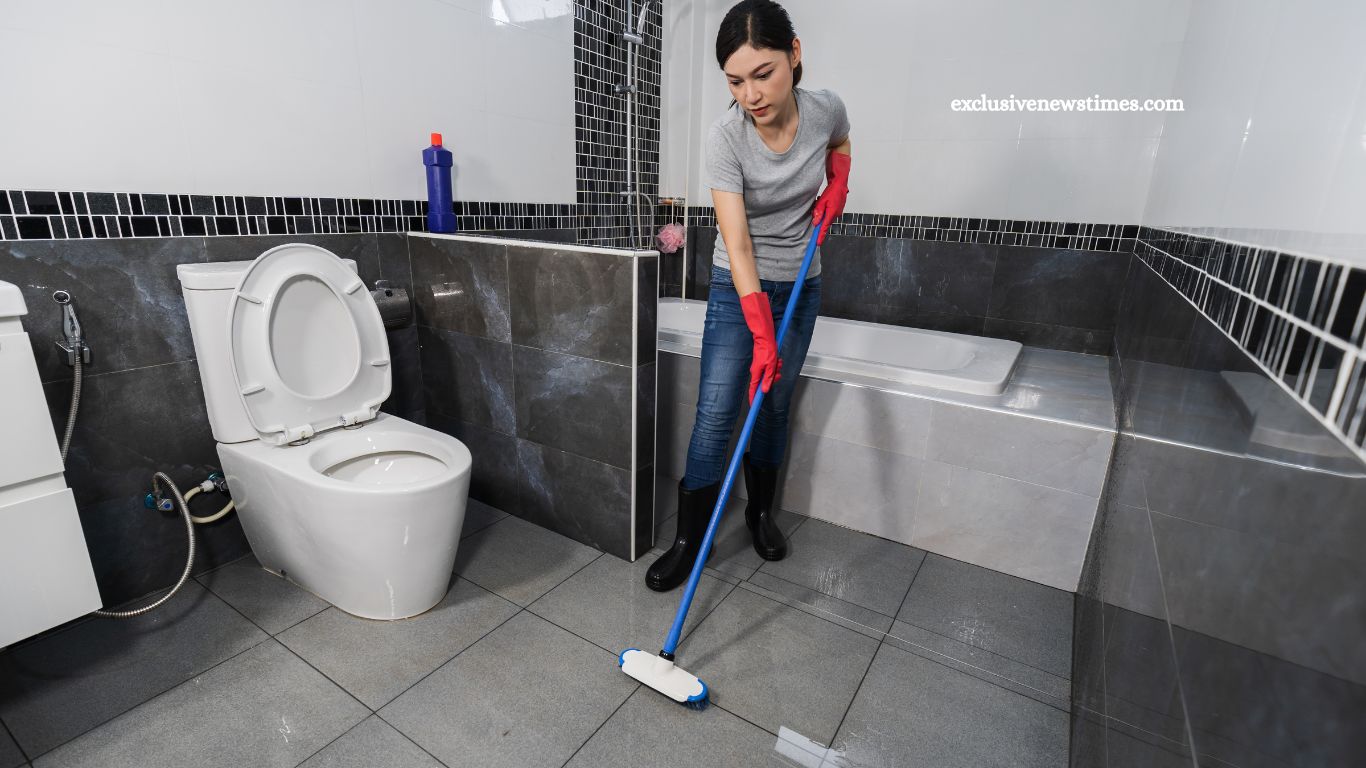Cleaning your toilet isn’t exactly anyone’s favorite chore but it’s one of the most important. Most of us spray, scrub lightly, and call it a day, assuming that’s enough. The truth? There’s a lot more lurking beneath the surface: bacteria, germs, mold, and other unwelcome surprises.
How often you clean and the methods you use can make all the difference between a truly sanitary toilet and one that just looks clean. In this guide, we’ll break down exactly why proper toilet cleaning matters, how to do it effectively, and how often it should be done. By the end, your definition of “clean” will likely change forever.
Read More: Labor Day Weekend Sees Dozens of Beaches Closed Due to Fecal Contamination
The Difference Between Household Cleaners and Disinfectants
Cleaner
Household cleaners—like soap and water, vinegar and baking soda, detergents, or anything labeled simply as a “cleaner”—are designed to remove dirt and surface debris. They help wipe away grime but don’t necessarily kill harmful microbes.
Disinfectant
Disinfectants, on the other hand, use chemicals specifically to kill pathogens on surfaces. Common examples include hydrogen peroxide, products labeled “antimicrobial,” and anything marketed as a “disinfectant.” While hydrogen peroxide is safe and effective for items like kids’ toys and pet products, it isn’t always as potent against germs, bacteria, and viruses as stronger chemical disinfectants.
To maintain a truly healthy home, you need both cleaning and disinfecting, especially on frequently touched surfaces. Don’t forget to sanitize your brushes and pads used during cleaning, too.
Bonus: Descalers and Descaling Tools
Even after cleaning and disinfecting, mineral buildup, rust stains, and biofilms can create sticky spots where bacteria thrive. Descaling dissolves this buildup—often using a solution for limescale—or, if necessary, a pumice stone tool to scrub away stubborn deposits. Regular descaling keeps your toilet surfaces cleaner and safer.
Not Your Momma’s Instructions: How to (Really) Clean and Disinfect Your Toilet
Thanks to Amazon and modern cleaning innovations, there’s now a brush, scraper, or solution for every nook and cranny of your toilet—from under the rim to the bowl and even the “ears” of the seat. Cleaning, deodorizing, sanitizing, and disinfecting can be approached in a few ways, whether you’re doing a daily maintenance clean or a deep weekly scrub.
Below are three main approaches: natural cleaning agents, chemical disinfectants, and tools and gadgets to make the job easier.
Au Naturel
For weekly sanitizing, try baking soda, vinegar, or other natural options.
Baking Soda Scrub
- Mix 1 tbsp baking soda with 1 tbsp water (adjust as needed for size/containers).
- Scrub the bowl, rim, and seat.
- Flush, wipe under and seat surfaces with a water-dampened rag or paper towel, then dry with a separate cloth.
Vinegar Solution
- Mix 1 part white vinegar with 4 parts water.
- Spray all surfaces and let sit for 10–15 minutes.
- Flush, wipe, and dry thoroughly.
Tip: Fully air-dry or wipe surfaces—moisture can let bacteria and mold multiply, so drying is part of disinfection.
We recommend: Simply Vinegar Industrial Strength 49% Vinegar – High-Performance Concentrated Cleaner
Rubbing Alcohol or Hydrogen Peroxide
- Mix 1:1 with water.
- Wipe outer surfaces and allow to air dry.
Descaling with Lemon
- The acidity in lemon slices or juice helps dissolve limescale and mineral buildup, keeping surfaces smooth and less prone to bacterial growth.
Essential Oils
Some essential oils have antibacterial and antifungal properties to disinfect and deodorize. Try:
- Eucalyptus, grapefruit, lemon, orange, oregano, peppermint, pine, rosemary, tea tree, thyme
Bleach
- A strong, effective disinfectant for toilets and other high-touch surfaces.
- CDC-recommended solution: 1 tsp unscented chlorine bleach per liter of water.
To Put the Lid on This Conversation
Yes 👏🏾 you 👏🏾 really 👏🏾 need 👏🏾 to 👏🏾 clean 👏🏾 that toilet—bowl, seat, lid, handle, and even those little “ears.” When we say clean, we mean the full package: cleaning, sanitizing, and disinfecting, ideally on a weekly—or even multiple-times-per-week—basis.
A simple routine can include concentrated vinegar, baking soda, and a few drops of antimicrobial essential oils for regular cleaning. Then, alternate with a diluted bleach solution or other disinfectants to sanitize and kill lingering germs. This regimen keeps biofilms, bacteria, viruses, and other infection-causing microbes at bay, while reducing the chance of aerosolized germs spreading throughout your home.
Frequently Asked Questions
How often should I clean my toilet?
Ideally, lightly clean and disinfect high-touch areas like the seat, lid, and handle at least once a week, with a deeper scrub of the bowl and rim weekly or as needed.
Can natural products like vinegar and baking soda really disinfect?
They’re effective for routine cleaning and mild sanitizing but aren’t as strong as chemical disinfectants like bleach or hydrogen peroxide against harmful pathogens.
Do I need to clean the toilet “ears” and handle?
Yes. Germs accumulate on all high-touch surfaces, not just the bowl.
How do I prevent biofilms and limescale?
Regular cleaning and descaling with vinegar or lemon prevents buildup where bacteria can hide and multiply.
Is bleach safe for toilets?
Yes, when diluted properly (e.g., 1 tsp per liter of water) and used with ventilation.
Conclusion
Keeping your toilet truly clean goes beyond a quick spray and wipe. Regularly cleaning, sanitizing, and disinfecting the bowl, seat, lid, handle, and even the “ears” protects your home from bacteria, viruses, and biofilms. Whether you choose natural solutions like vinegar and baking soda, chemical disinfectants like bleach or hydrogen peroxide, or a combination of both, consistency is key. Pairing proper cleaning techniques with descaling and drying surfaces ensures your toilet stays hygienic and safe.


